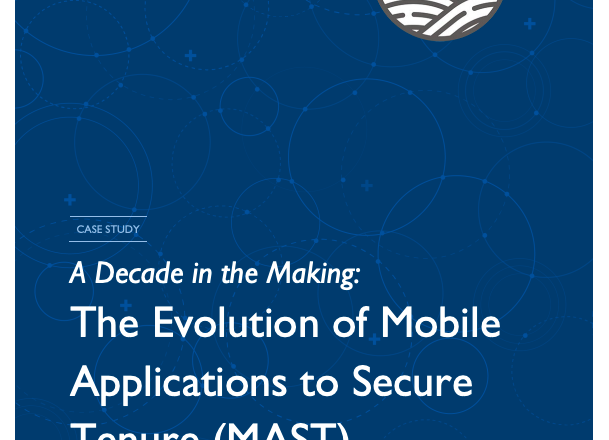Introduction
Mobile Applications to Secure Tenure (MAST) is a blend of participatory mapping approaches and flexible technology tools that USAID developed to empower communities to document and secure their land and resources rights in support of a range of development objectives ranging from women’s empowerment and food security to climate change mitigation and biodiversity preservation. The MAST approach provides flexibility to accommodate different technology options, including mobile apps and web-based data management platforms, designed and adapted to help communities document their rights quickly and affordably. MAST’s participatory mapping methodology emphasizes on-the-ground engagement and training to empower citizens as data collectors and build their capacity to maintain land information and manage their land and resources. Using MAST, community members can efficiently collect and verify information necessary to enhance tenure security—for example, verifying names and photographs of people using and occupying land, including names of neighbors who share a border, details about land use, and providing a basis for their land claims—and use that information to obtain land documents.
The concept behind MAST was first conceived in rural Ghana a decade ago, but it took until 2014 for the idea to become real. Since then, MAST has moved from a small pilot in Iringa District, Tanzania to a multi-country approach that USAID and partner organizations have used to map and document more than 93,000 land parcels across Tanzania. The UK Foreign, Development and Commonwealth Office (FCDO) has adopted the MAST approach in its own land registration project in Tanzania, scaling it further to 300,000 parcels and counting. MAST is now also being deployed in Mozambique, Zambia, Liberia, Malawi, and Ghana.
This case study examines the evolution of the MAST approach, from conception to piloting, assessment, and scaling. This work demonstrates how MAST can be used to address issues including poverty reduction, women’s empowerment, conflict prevention, and food security. It also demonstrates how a land documentation approach such as MAST can iterate and adapt to new contexts and challenges and, in the process, take on new forms and functions.


